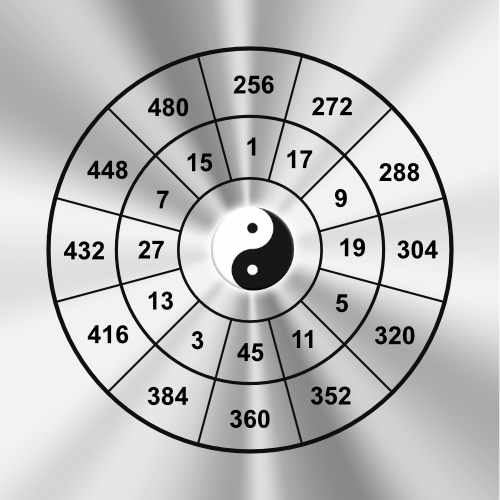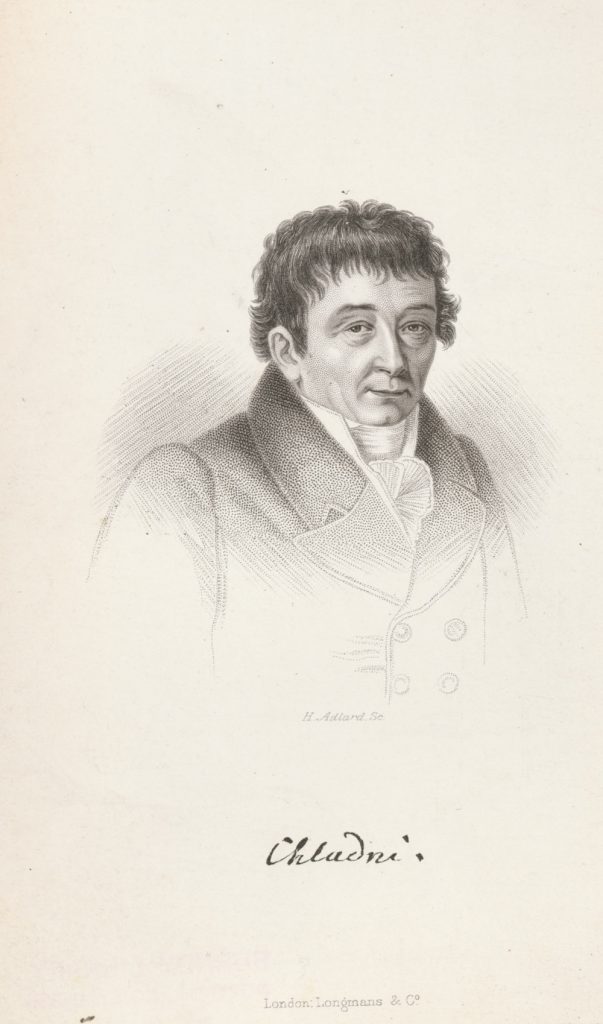432 Hz Fakes

432 Hz is part of a higher-level tuning system
432 Hz is part of a higher-level tuning system.
Natural Tuning
This tuning system is based on the basic reference frequency of
1 Hz (128 Hz).
This is the key of C.
And this is the origin of the 432 Hz music.
432 Hz frequency is unique.
If you build the pure tuning on the 432 Hz frequency, not only all octaves result in the cross sum 9, but also every note of the chromatic 12 scale.
There is no other scale that has this property.
432 Hz is not just a frequency, but has become synonymous with a certain kind of music. Ambient, meditative, psychedelic, sound healing, these are terms that make 432 hertz music sound. 128 Hz and 432 Hz get along well, they belong to the same frequency family.
But how these family relationships come about was not revealed until the discovery of the universal frequency model for the naturally pure tuning of music.
As a result, a definition of 432 Hz music based on natural science could emerge for the first time.
432 Hz Definition
In most cases, 432 Hz music is given the „better than 440 Hz“ label, whereby „better“ can mean different things. Healing effects are attributed to it, a relation to nature is seen, even divinity is glimpsed. That’s the way it is with innovations that are supposed to become the standard. Here esoteric prophets still have their great time.
These usually „half-true“ information should not concern us here in this definition further, because here we get along without any esotericism. Here it goes scientifically provable and physically experimentally comprehensible.
Superordinate tuning system
First of all, it is important to know that the 5 scales listed below do not stand alone, but originate from a superordinate tuning system. This tuning system is based on the fundamental reference frequency of 1 Hz (128 Hz). This is the key of C.
This is the origin, the base, the frequency family of 432 Hz music.
I. Definition of pure 432 Hz music
Without a doubt, music that has the following reference frequencies and intervals can be called 432 Hz music:
The intervals based on the respective key notes (D, F#, G, A, B) have the following (pure) ratios to the key note:
(other ratios are also in use for certain intervals, e.g. the Antares Autotune software uses 16/9 for the minor seventh).
| 1/1 | prime |
| 16/15 | minor second |
| 9/8 | major second |
| 6/5 | minor third |
| 5/4 | major third |
| 4/3 | perfect fourth |
| 45/32 | augmented fourth |
| 3/2 | perfect fifth |
| 8/5 | minor sixth |
| 5/3 | major sixth |
| 9/5 | minor seventh |
| 15/8 | major seventh |
| 2/1 | prime |
Natural overtone series
The intervals are based on the natural overtone series.
The natural overtone series is a constant of nature just like gravity.
It is not a phenomenon invented by man.
Therefore, the tuning is a natural tuning.
This interval design is called pure tuning.
Therefore, this 432 Hz music has a natural origin.
II. Extended definition of pure 432 Hz music
This includes keys with deviating intervals, e.g. Pythagorean tuning or Maria Renold tuning or other mixed forms of pure tuning.
III. 432 Hz with equal temperament
Often it is not possible to play in the pure and extended pure tuning because of the wide spread of instruments that can only be played with equal temperament. This concerns e.g. guitars, pianos etc. In this level of 432 Hz music, only everything is tuned 8 Hz lower.
IV. Definition of non-pure 432 Hz music
This is music that has simply been lowered by 8 Hz in post-production, for example, or it is music that has been produced with samples recorded with reference to the A4 = 440 Hz concert pitch. This music is not actually 432 Hz music. The pure character of the formants is lost.
The position and expression of the formants have a decisive influence on the timbre of a musical instrument or voice. They allow voices and musical instruments to be distinguished from one another.
432 Hz – Chronicle
At its core, music is pure mathematics – calculable air vibrations whose frequencies overlap according to physical rules. These frequencies stand in certain mathematical relations to each other.
The beginning of frequency research, the exploration of intervals, was made by the philosopher Pythagoras around 500 BC.
Using a movable bridge, Pythagoras divided the string of the monochord, for example, in the ratio of one to two. From then on, the two string sections sounded exactly one octave apart, the basic interval of all music.
This was the starting point of an always experimentally verifiable research, which can be represented today in a comprehensive frequency model: a tuning system, which refers to the natural tone series and to 1 Hertz.
This is one side of reality.
The other side is the spiritual-scientific dimension, which is inseparable from 432 Hertz music.
570 B.C. Pythogoras

Harmony of the spheres
The idea of spherical harmonies originated with Pythagoras of Samos or his followers, the Pythagoreans, and forms an essential element of Pythagorean cosmology.
Behind it was the conviction that the cosmos was a whole optimally ordered by mathematical proportions and that therefore the same regularities show up in astronomy as in music.
As sphere harmony or sphere music one calls the conception originating from the Greek antiquity that with the movements of the celestial bodies and the transparent balls (spheres) carrying them tones develop, whose height depends on their distances and speeds. The tones produce a harmonic harmony, which, however, is not normally audible to humans.
Plato was inspired by the ideas of the Pythagoreans, whom he had already met on his first trip to Italy in 388/387 B.C., to develop his own concept of the harmonic structure of the cosmos, which he presented in the dialogues Politeia and Timaeus. His harmony of spheres is based on eight tones emanating from the seven planetary spheres and the fixed star sphere.
This is of course nonsense. There are no tones produced by the movements of the celestial bodies, that is physically impossible in the airless space.
Now the people looked at that time and today also predominantly always to the outside. With the senses, by the eyes and ears, so they think, they can grasp the reality. But now it is so that the frequencies which people see, feel and hear also „format“ them. The frequencies form the person who surrenders to the sensory impressions.
Pythagoras at the forge
Pythagoras at the Forge is an ancient legend that describes how Pythagoras discovered in a forge that simultaneous hammer blows produced melodious tones when the weights of the hammers were in certain integer ratios.
This observation had led him to experiments on the vibrating string of a monochord, which became the basis for the music-theoretical description of intervals.
With the knowledge gained in this way Pythagoras founded the theory of music.
Read more on Wikipedia
This is probably not quite true. Above all the story with the forge is invented.
Pythagoras discovered the pure intervals of the octave, the fourth and the fifth.
That was the first sign of life of the pure tuning.
Music is applied mathematics.
The true power of 432 Hz only becomes clear in the context of pure tuning.
Pythagoras was probably the first who found the pure tuning.
Only the pure tuning leads to the realization of the special meaning of the frequency 432 Hz.
And only the pure tuning gives the view to the natural universal frequency model which starts with 1 Hz.

Concert Pitch
Closely connected to the history of 432 hertz is the concert pitch.
Until the 19th century, there was no uniform pitch, but it was tuned differently depending on the place or region as well as on the type of music. So there was no 432 Hertz frequency as a reference. And if, then probably rather coincidentally.
The first mention of 432 hertz seems to me to be this one:
(G. Schubring: Theorie und Berechnung der Tonleiter, Zeitschrift für die gesammten Naturwissenschaften, Vol. 32; Verlag Bosselmann, 1868, pp. 483, 485-486).
„A still somewhat lower tuning has Chladni already
in the beginning of this century, by not using the
not using the tone a as a basis, but C; he started out
from the relative oscillation numbers, which for the octave
of the fundamental note the value 2, for the higher octaves thus
4, 8, 16 – 2″ for the higher octaves, and he then gave all the
tones C also absolute vibration numbers which are powers
of 2. The tone O received in consequence the absolute
vibration number 256 and from this the various tones a belonging in dise octave are calculated as follows:
the pure sixth a^ =s 4262/3, the Pythagorean sixth A^ = 432,
the equal tempered sixth A^ = 430,538.
So if one wanted to use this tuning in music…….“
Aha, the Pythagorean sixth then. So not an independent frequency as a fundamental, but a frequency that relates to another frequency. 256 Hz, there we have it: the reference frequency of 1 Hertz.
256 Hertz is an octave of 1 Hz.
